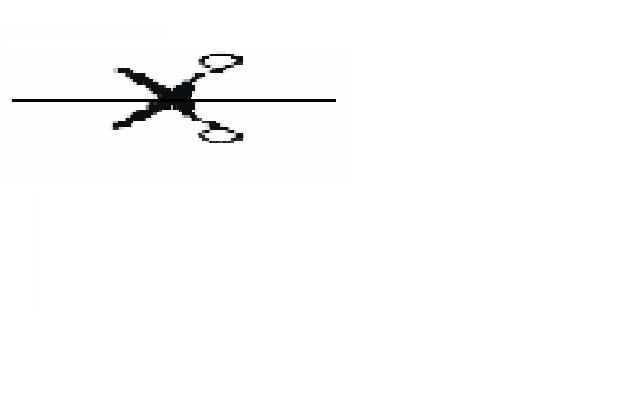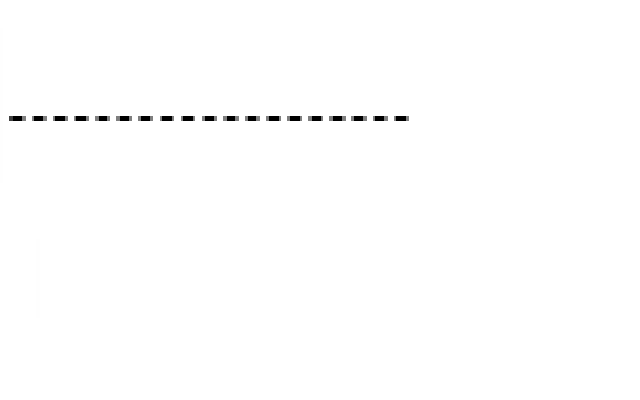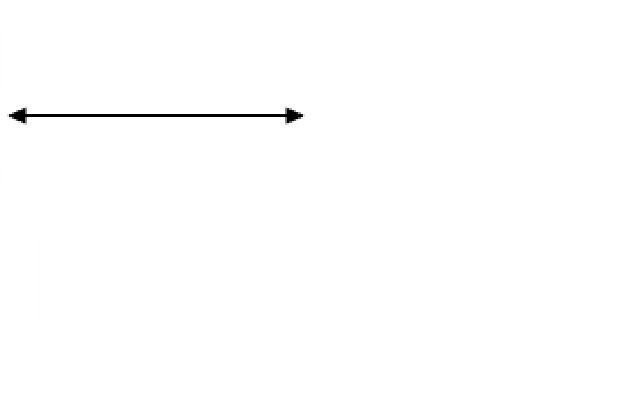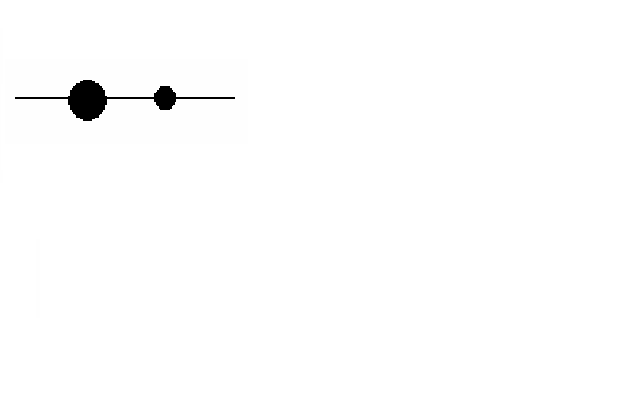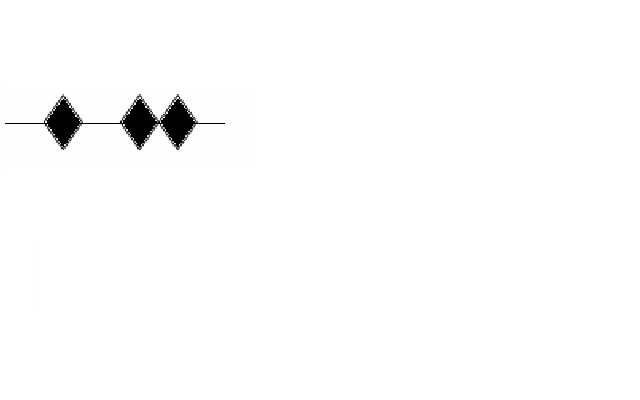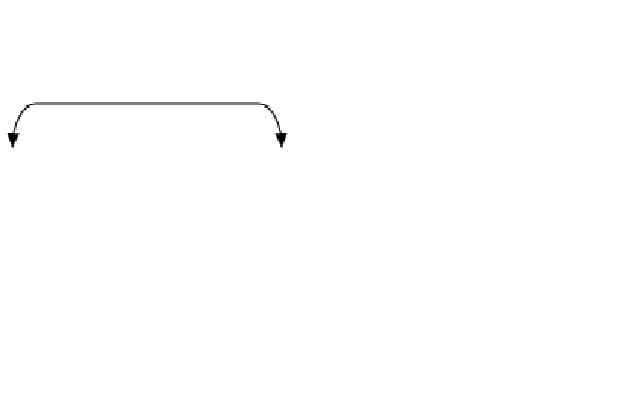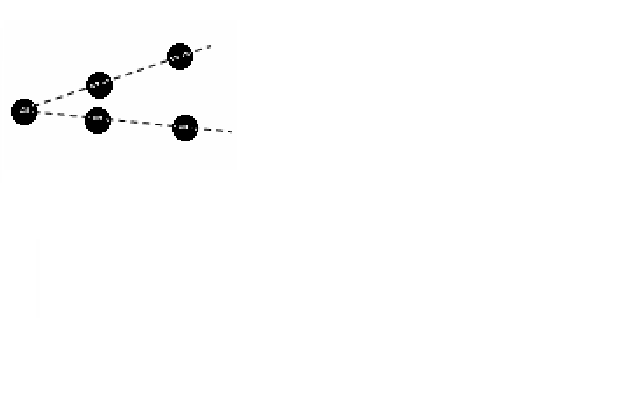8th Grade Sewing Quiz: Ultimate Trivia!
(107).jpg)
Sewing is a tradition that goes back centuries. There are a lot of designs that one can come up with and sew them and if you want to thrive in the fashion business as a designed you must know a thing or two about sewing. Take this Sewing Skills and Knowledge quiz used in 8th Grade Exploratory FACS to see how good you are.
- 1.
Contains seam allowance markings for accurate sewing.
- A.
Throat Plate
- B.
Feed Dogs
- C.
Bobbin Casing
Correct Answer
A. Throat PlateExplanation
The throat plate is the correct answer because it contains seam allowance markings for accurate sewing. The throat plate is the metal plate that covers the feed dogs and bobbin casing on a sewing machine. It has various markings and guides that help the sewer maintain consistent seam allowances while sewing. These markings ensure that the fabric is fed through the machine at the correct distance from the needle, resulting in precise and accurate sewing.Rate this question:
-
- 2.
Allows for backward stitching to secure a seam.
- A.
Feed Dogs
- B.
Spool Pin
- C.
Reverse
Correct Answer
C. ReverseExplanation
The reverse function on a sewing machine allows for backward stitching, which is useful for securing a seam. By stitching in reverse, the thread is reinforced and prevents the seam from coming undone. This feature is commonly found on sewing machines and is essential for creating strong and durable seams in various sewing projects.Rate this question:
-
- 3.
Feeds thread from the spool to the needle.
- A.
Stitch Width Control
- B.
Thread Take-Up Lever
- C.
Tension Control
Correct Answer
B. Thread Take-Up LeverExplanation
The thread take-up lever is responsible for feeding the thread from the spool to the needle. It is a mechanism that moves up and down with each stitch, pulling the thread through the machine. This lever ensures that the thread is properly tensioned and positioned for the needle to create stitches. Without the thread take-up lever, the thread would not be properly fed and the machine would not be able to sew.Rate this question:
-
- 4.
Manual control of the needle movement.
- A.
Reverse
- B.
Hand Wheel
- C.
Thread Take-Up Lever
Correct Answer
B. Hand WheelExplanation
The hand wheel is used for manual control of the needle movement in a sewing machine. By turning the hand wheel, the user can manually raise or lower the needle, allowing for precise positioning and control. This is particularly useful when starting or ending a stitch, adjusting the fabric, or when sewing intricate patterns that require careful needle placement. The hand wheel gives the user direct control over the needle, making it an essential feature for any sewing machine.Rate this question:
-
- 5.
Adjusts the tightness and looseness of the upper thread.
- A.
Stitch Width Control
- B.
Stitch Length Control
- C.
Tension Control
Correct Answer
C. Tension ControlExplanation
Tension control is the correct answer because it allows the user to adjust the tightness and looseness of the upper thread. By adjusting the tension control, the user can ensure that the stitches are formed evenly and securely. This control is important for achieving the desired stitch quality and preventing issues such as loose or tight stitches.Rate this question:
-
- 6.
Holds the fabric firmly in place against the feed dogs.
- A.
Foot Control
- B.
Presser Foot
- C.
Throat Plate
Correct Answer
B. Presser FootExplanation
The presser foot is the correct answer because it is the part of a sewing machine that holds the fabric firmly in place against the feed dogs. The feed dogs are the metal teeth located under the presser foot that move the fabric forward as the machine sews. Without the presser foot, the fabric would not be held securely and may not feed through the machine properly.Rate this question:
-
- 7.
Has a tooth-like surface that moves the fabric during stitching.
- A.
Throat Plate
- B.
Throat Dogs
- C.
Feed Dogs
Correct Answer
C. Feed DogsExplanation
The feed dogs on a sewing machine have a tooth-like surface that moves the fabric during stitching. They are located beneath the throat plate and work in conjunction with the presser foot to advance the fabric smoothly through the machine. The feed dogs grip the fabric and move it forward and backward, allowing the needle to create even and consistent stitches. Without the feed dogs, the fabric would not be properly guided and may result in uneven or skipped stitches. Therefore, the feed dogs are essential for the proper functioning of a sewing machine.Rate this question:
-
- 8.
Adjust the width of stitches when using the zigzag.
- A.
Stitch Length Control
- B.
Stitch Pattern Control
- C.
Stitch Width Control
Correct Answer
C. Stitch Width ControlExplanation
The correct answer is Stitch Width Control. When using the zigzag stitch, adjusting the width of stitches is important to achieve the desired outcome. The stitch width control allows you to increase or decrease the width of the zigzag stitches, which can be useful for various sewing techniques such as appliqué, satin stitching, and decorative stitching. By adjusting the stitch width, you can customize the appearance and functionality of your stitches to suit your sewing project.Rate this question:
-
- 9.
Hold the upper thread in place during sewing.
- A.
Spool Pin
- B.
Thread Take-up Lever
- C.
Thread Guides
Correct Answer
C. Thread GuidesExplanation
Thread guides are used to hold the upper thread in place during sewing. They are small metal or plastic pieces that are positioned along the sewing machine's threading path. The thread is threaded through these guides to ensure that it stays in place and follows the correct path while being fed through the machine. This helps to prevent tangling or knotting of the thread and ensures smooth and even stitching.Rate this question:
-
- 10.
The small, flat spool that hold the bottom thread.
- A.
Spool Pin
- B.
Bobbin
- C.
Bobbin Winding Spindle
Correct Answer
B. BobbinExplanation
The small, flat spool that holds the bottom thread is called a bobbin.Rate this question:
-
- 11.
Holds the thread spool while sewing.
- A.
Spool Pin
- B.
Bobbin
- C.
Bobbin Winding Spindle
Correct Answer
A. Spool PinExplanation
The spool pin is a small rod or pin that holds the thread spool in place while sewing. It is located on the top of the sewing machine and is designed to keep the thread spool stable and prevent it from rolling or bouncing around during the sewing process. The thread is pulled from the spool through the machine's tension discs and then threaded through the needle, allowing for smooth and consistent stitching.Rate this question:
-
- 12.
Holds the bobbin during sewing - some are removable.
- A.
Spool Pin
- B.
Bobbin Winding Spindle
- C.
Bobbin Casing
Correct Answer
C. Bobbin CasingExplanation
The bobbin casing holds the bobbin during sewing and is responsible for properly feeding the thread to create stitches. It is an essential component of the sewing machine and ensures that the bobbin thread is correctly positioned and tensioned. While the spool pin holds the thread spool and the bobbin winding spindle is used to wind thread onto the bobbin, neither of these options directly hold the bobbin during sewing like the bobbin casing does.Rate this question:
-
- 13.
The pins should be removed immediately from pattern pieces after cutting the fabric.
- A.
True
- B.
False
Correct Answer
B. FalseExplanation
The statement is false because the pins should not be removed immediately from pattern pieces after cutting the fabric. The pins are used to hold the fabric in place during the cutting process, and removing them immediately can cause the fabric to shift and result in inaccurate cutting. It is recommended to remove the pins after the fabric has been sewn together to ensure proper alignment and fit.Rate this question:
-
- 14.
The lines on the throat plate of the sewing machine can help keep seams straight while you are sewing.
- A.
True
- B.
False
Correct Answer
A. TrueExplanation
The lines on the throat plate of a sewing machine can help keep seams straight while sewing. These lines act as a guide for the fabric, allowing the user to sew in a straight line and maintain even seam allowances. By aligning the fabric with the lines on the throat plate, the sewer can ensure that their stitches are straight and the finished product looks neat and professional.Rate this question:
-
- 15.
You will need to guide the fabric with your hands while you are stitching with a sewing machine.
- A.
True
- B.
False
Correct Answer
A. TrueExplanation
When using a sewing machine, it is important to guide the fabric with your hands to ensure that it stays in place and moves smoothly under the needle. This helps to prevent any bunching or uneven stitching. By guiding the fabric, you can also control the speed and direction of the stitching, allowing for more precise and accurate sewing. Therefore, the statement is true.Rate this question:
-
- 16.
Backstitching is used to prevent the stretching of fabric during handling.
- A.
True
- B.
False
Correct Answer
B. FalseExplanation
Backstitching is actually used in sewing to secure the stitches at the beginning and end of a seam, not to prevent the stretching of fabric during handling. It helps to strengthen the seam and prevent it from unraveling. Therefore, the correct answer is false.Rate this question:
-
- 17.
A color of tracing paper or chalk that blends in the color of the fabric is a good choice.
- A.
True
- B.
False
Correct Answer
B. FalseExplanation
Choosing a color of tracing paper or chalk that blends in with the fabric color is not a good choice. This is because if the color blends in, it will be difficult to see the markings on the fabric, which can make it challenging to cut and sew accurately. Therefore, the statement is false.Rate this question:
-
- 18.
Cutting the edges of fabric evenly makes it easier to sew straight seams.
- A.
True
- B.
False
Correct Answer
A. TrueExplanation
Cutting the edges of fabric evenly ensures that the fabric pieces align properly when sewing, resulting in straight seams. Uneven edges can cause the fabric to shift or bunch up, making it difficult to sew straight lines. By cutting the edges evenly, the fabric pieces can be easily matched and sewn together accurately, resulting in a neater and more professional-looking finished product.Rate this question:
-
- 19.
The ____________________ provides step-by-step instructions for using a pattern.
Correct Answer
Guide Sheet, Directions, InstructionsExplanation
The given answer options, "Guide Sheet, Directions, Instructions," all refer to resources that provide step-by-step instructions for using a pattern. These resources typically outline the necessary steps and provide clear guidance on how to successfully execute a pattern. Whether it is called a guide sheet, directions, or instructions, the purpose remains the same - to assist users in understanding and implementing a pattern effectively.Rate this question:
- 20.
If the selected pattern does not fit your body, ____________ will need to be made to the pattern before it is pinned to the fabric.
Correct Answer
Adjustments, Alterations, ChangesExplanation
If the selected pattern does not fit your body, adjustments, alterations, or changes will need to be made to the pattern before it is pinned to the fabric. This means that modifications or corrections will be necessary to ensure that the pattern matches the individual's body measurements and proportions accurately.Rate this question:
- 21.
A diagram showing how the pattern pieces should be placed on the fabric is called a _______
Correct Answer
LayoutExplanation
A diagram showing how the pattern pieces should be placed on the fabric is called a layout. This layout provides a visual guide for arranging the pattern pieces in the most efficient and effective way on the fabric, ensuring that all pieces fit properly and minimize fabric waste. It helps in determining the grainline, matching pattern markings, and ensuring that the fabric is utilized optimally during the cutting process.Rate this question:
- 22.
The amount of fullness added to a pattern for movement and comfort is called ______
Correct Answer
EaseExplanation
Ease refers to the additional space or fullness added to a pattern to allow for movement and comfort when wearing a garment. It ensures that the garment is not too tight or restrictive, allowing the wearer to move freely. Ease can be added in different areas of a pattern, such as the bust, waist, hips, or sleeves, depending on the specific design and fit requirements. Overall, ease is essential in creating a comfortable and functional garment that fits well and allows for ease of movement.Rate this question:
- 23.
Identify the following (Choose from the following choices - cutting line, dart, dots, grainline, notches, place on the fold, stitching line)
Correct Answer
cutting lineExplanation
The cutting line is the line on a pattern that indicates where the fabric should be cut. It is the boundary that separates the excess fabric from the desired shape of the garment. By following the cutting line, the fabric can be cut accurately to match the pattern and create the desired garment shape.Rate this question:
- 24.
Identify the following (Choose from the following choices - cutting line, dart, dots, grainline, notches, place on the fold, stitching line)
Correct Answer
stitching lineExplanation
The term "stitching line" refers to the line along which two pieces of fabric are sewn together. It is the line that indicates where the stitches should be made to join the fabric pieces. This line is usually marked on the fabric pattern or can be drawn directly on the fabric before sewing. The stitching line is important as it ensures that the pieces are sewn together accurately and securely.Rate this question:
- 25.
Identify the following (Choose from the following choices - cutting line, dart, dots, grainline, notches, place on the fold, stitching line)
Correct Answer
grain lineExplanation
The grain line refers to the direction of the fabric's threads. It is an important marking on sewing patterns that indicates the direction in which the pattern pieces should be placed on the fabric. The grain line ensures that the fabric is cut and sewn in the correct direction, which is crucial for the fit and drape of the finished garment.Rate this question:
- 26.
Identify the following (Choose from the following choices - cutting line, dart, dots, grainline, notches, place on the fold, stitching line)
Correct Answer
dotsExplanation
Dots are small circular marks that are used as reference points on a pattern. They indicate where other pattern pieces or markings should be aligned or connected. Dots are commonly found on pattern pieces for darts, notches, and stitching lines. They help ensure accurate and precise construction of the garment.Rate this question:
- 27.
Identify the following (Choose from the following choices - cutting line, dart, dots, grainline, notches, place on the fold, stitching line)
Correct Answer
notchesExplanation
Notches are small, triangular markings on a pattern that help align and match different pieces of fabric during the sewing process. They are used to indicate where seams should be sewn together and ensure that the pieces fit together accurately. By lining up the notches, sewers can easily match up the corresponding sections of the fabric and create a smooth and seamless finished garment.Rate this question:
- 28.
Identify the following (Choose from the following choices - cutting line, dart, dots, grainline, notches, place on the fold, stitching line)
Correct Answer
place on foldExplanation
The term "place on fold" refers to a marking on a pattern that indicates where the fabric should be folded. This is done to ensure that the pattern is cut in a symmetrical manner. When the fabric is folded along this line, the resulting cut pieces will be identical. This is commonly used for patterns that have a mirrored design or when creating symmetrical garments.Rate this question:
- 29.
Identify the following (Choose from the following choices - cutting line, dart, dots, grainline, notches, place on the fold, stitching line)
Correct Answer
dartExplanation
A dart is a triangular or diamond-shaped fold in fabric that is used to shape a garment to fit the curves of the body. Darts are typically used in areas such as the bust, waist, or hips to create a more tailored and fitted look. They are created by folding the fabric and stitching along the folded edge, and can be seen as a seam on the right side of the garment. Darts are an important technique in garment construction and are used to add shape and structure to the garment.Rate this question:
- 30.
Which sewing technique is described as follows Place fabric with right sides together, line up the raw edges and pin together. Line up the fabric to the desired seam allowance and stitch.
- A.
Hem
- B.
Seam
- C.
Backstitch
Correct Answer
B. SeamExplanation
The correct answer is "Seam." This sewing technique involves placing fabric with right sides together, aligning the raw edges, and pinning them together. Then, the fabric is stitched along the desired seam allowance. The seam is a common technique used to join two pieces of fabric together.Rate this question:
-
- 31.
Which sewing technique is described as follows Measure fabric edge to the desired length, fold, and pin in place. Repeat. Stitch the folded fabric close to the open edge.
- A.
Hem
- B.
Seam
- C.
Backstitch
Correct Answer
B. SeamExplanation
The given description describes the sewing technique of creating a seam. In this technique, the fabric edge is measured to the desired length, folded, and pinned in place. This process is repeated, and then the folded fabric is stitched close to the open edge. This creates a secure and neat seam in the fabric.Rate this question:
-
- 32.
Which sewing technique is described as follows Begin by stitching forward about 1/2 inch (a count of five), then retrace the stitching back to the beginning. Repeat at the end of the stitching line.
- A.
Hem
- B.
Seam
- C.
Backstitch
Correct Answer
C. BackstitchExplanation
A backstitch is a sewing technique that involves stitching forward for a short distance and then retracing the stitching back to the beginning. This technique is commonly used to reinforce seams or to create a strong and durable stitch. By stitching forward and then backtracking, the stitches become more secure and less likely to come undone. It is often used at the beginning and end of a stitching line to secure the thread in place.Rate this question:
-
Quiz Review Timeline +
Our quizzes are rigorously reviewed, monitored and continuously updated by our expert board to maintain accuracy, relevance, and timeliness.
-
Current Version
-
Mar 22, 2023Quiz Edited by
ProProfs Editorial Team -
Nov 25, 2008Quiz Created by
Leitheiser
 Back to top
Back to top



